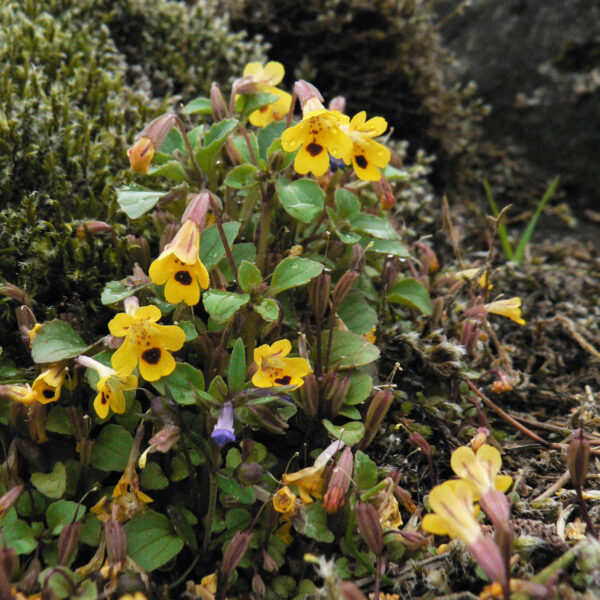Chickweed Monkey-flower
Mimulus alsinoides Dougl. ex Benth.

overview
Annual herb. Stems leafy, slender, nearly hairless to somewhat glandular-hairy, simple or freely branched, 5-30 cm tall. Leaves opposite, stalked, elliptic to triangular egg-shaped, irregularly toothed, thin, hairless, yellowish-green, three to five veined. Yellow flowers with a reddish-brown blotch on the lower lip, 8-14 mm long, two-lipped, four stamens, one to few on stalks at each node. Fruit an oblong-pointed capsule 5-7 mm long. Seeds numerous. Photo by Kathryn Martell.
family
Scrophulariaceae
ecological setting
Vernally moist, often shady, mossy ledges, rocky slopes, mostly at low elevations (Pojar and MacKinnon,1994). Vancouver Island, Gulf Islands and lower Fraser Drainage (Douglas et al., 2000).
soil texture
Well-drained soils (Maslovat, personal communication)
soil reaction salinity
Prefers acidic soils (Maslovat, personal communication)
moisture regime
Seasonally moist to wet, xeric through summer (Hitchcock et al, 1961).
shade tolerance
Full sun to part shade (Pojar and MacKinnon, 1994).
bec zone subzone status
Found in moister Garry Oak ecosystems (Maslovat, personal communication)
landscaping
Showy annual for a moist, semi-shady rockery.
first nations
No known uses.
flowering time
April to late June
fruit ripening time
May to June
seed collection time
May to June (Maslovat personal communication)
collection and abstraction
Seeds are small and difficult to collect. Cut capsules by hand when nearly ripe and place in collection bags. Allow capsules to open and shake bags to release seeds.
seed storage
Seeds are very small. Prolonged storage will probably decrease viability.
fruit seed dormancy treatment
Sow seeds in flats in fall or early spring. Because seeds are so small, mix with sand to get a proper distribution of seeds in the flat.
vegetative propagation
Not applicable for an annual species.
additional info and photos
For more information and pictures, visit the E-Flora BC website at www.eflora.bc.ca